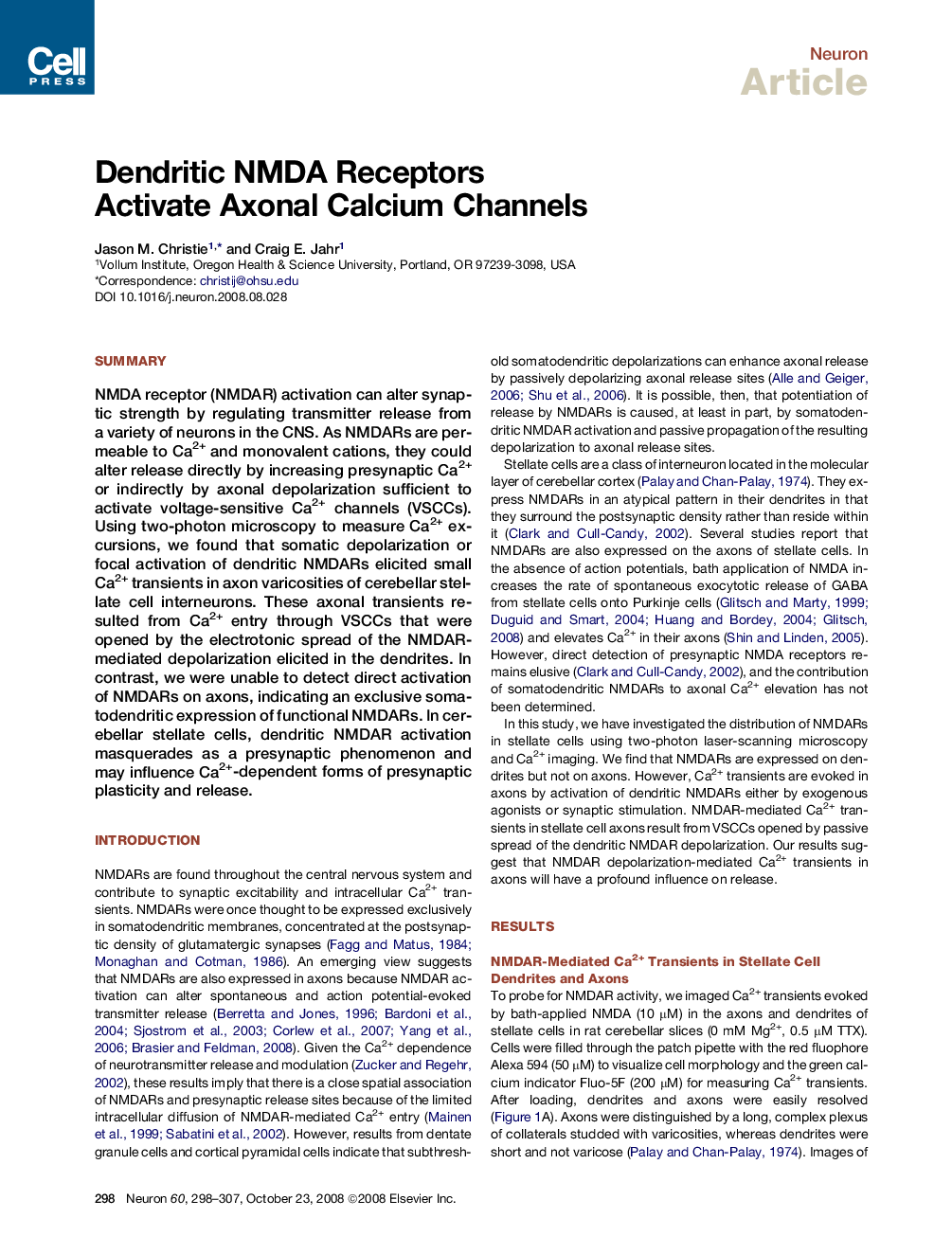| Article ID | Journal | Published Year | Pages | File Type |
|---|---|---|---|---|
| 4323048 | Neuron | 2008 | 10 Pages |
SummaryNMDA receptor (NMDAR) activation can alter synaptic strength by regulating transmitter release from a variety of neurons in the CNS. As NMDARs are permeable to Ca2+ and monovalent cations, they could alter release directly by increasing presynaptic Ca2+ or indirectly by axonal depolarization sufficient to activate voltage-sensitive Ca2+ channels (VSCCs). Using two-photon microscopy to measure Ca2+ excursions, we found that somatic depolarization or focal activation of dendritic NMDARs elicited small Ca2+ transients in axon varicosities of cerebellar stellate cell interneurons. These axonal transients resulted from Ca2+ entry through VSCCs that were opened by the electrotonic spread of the NMDAR-mediated depolarization elicited in the dendrites. In contrast, we were unable to detect direct activation of NMDARs on axons, indicating an exclusive somatodendritic expression of functional NMDARs. In cerebellar stellate cells, dendritic NMDAR activation masquerades as a presynaptic phenomenon and may influence Ca2+-dependent forms of presynaptic plasticity and release.
